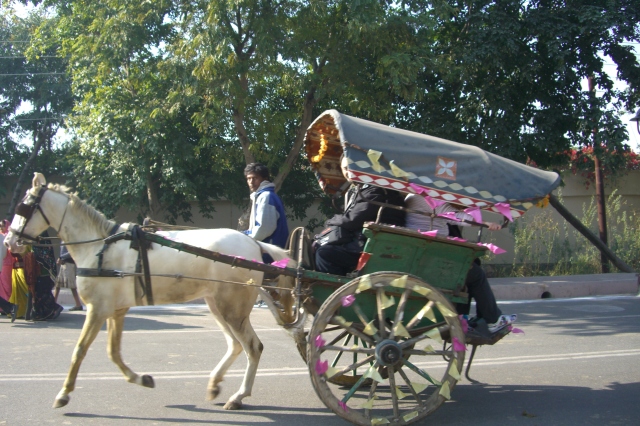
Chap Links
Chap 4: Break Free
-o-
Dadar station(Major Railway/Train Station in Mumbai, India)
“CHAIYAA! CHAIYA GARAM GARAM CHAIYA!!! Madam Chai?” (Tea! Tea! Hot hot Tea..! Madam Tea?)
Khanak woke up with a start and looked bleary eyed at the thin almost emaciated child with very bright eyes, who was extending a glass full of the milky brown brew. It took her a little while to realize where she was.
Then it all came back to her. What had transpired more than 24 hrs ago; the shock, the tears of anger and disappointment at being considered a liability by her uncle. Why hadn’t her parents taken her along on their fatal journey? Then she wouldn’t been alive to face this day.
“Nahin chahiye.” (I don’t want it.) She shook her head in the negative.
“Madam..coolie (porter) ?”
“No thanks, mein theekh hoon!” (No thanks, I am fine!)
“Aho bai, tumcha samaan jast bhari aahe! Tumchaashi uchaalal janar nahi” (No madam, your bag is really heavy! You won’t be able to lift it!)
“Kya? Hindi mein bolo!” (What? Say in Hindi!)
“Madam aapka saaman bahut bhaari aahe! (Madam your luggage is very heavy!) Lifting very difficult!” The heavy set rotund and cheerful porter replied in an admixture of Hindi and English.
Everybody seems to be living a wonderful life except me.
“Meine jab nahin kaha toh nahin samjhe!?”(When I say no, I mean no, understand?) She replied sternly.
“Nahi bai saheb, mein uchalun ghein, tumchi je iccha asel te deun dya!” (No madam I will take it, you pay me whatever you wish!) Persisted the coolie now in Marathi tugging at the handle of her black suitcase trying to wrench it from her grasp.
“No you say whatever, but I won’t relent!” She shouted back clutching tightly at the article in contention in which she had hastily packed a few last minute essentials after making the decision to leave the dwelling which she’d called her home for 20+ years. That and she also held on to her shoulder bag as if her life depended on it because it contained all the money she called her own and the big wad of notes which her aunt had thrust into her hand upon chancing on her intentions.
“Okay Bubbly, even if I wish to I can’t ask you to stay because I know I won’t be able to change your uncle’s decision.”
Khanak nodded in agreement. She was yet to come across anyone as hard headed.
“But I will miss you a lot and so will Shreya!”
“Yes, I know. But I see no other option. I don’t want to get married before I make a name for myself, become somebody. At least I want to give it a fair try.” Khanak held her aunt’s hand in earnest. She loved her both as a mother and a friend.
“How will you go about it my child? Where will you go? You haven’t been much on your own at all. Sometimes I think we’ve both cloistered you too much.” Worry furrowed Komal’s brow.
“You meant well, no parent…” Khanak caught herself, “you did what you thought was best. Don’t bother. I’m a city girl and I can take care of myself.” She’d left her with those strong words.
So much for my confidence! Khanak thought as she got down from the train, her mind still a sea of conflicting thoughts and emotions. Have I been too impulsive? She glanced around nervously at the milieu of confused humanity around her; everybody seemed to be heading somewhere or the other, with not a second to spare.
Maybe I should’ve tried to reason with chachu? She wondered briefly before promptly dispelling the thought. No! Who am I trying to fool? I’d have just bought myself permanent shackles! Khanak shivered at the terrifying image.
She picked her way towards the exit and dialed the number of a friend she knew who resided in Mumbai, working and living independently away from her family. Khanak had always admired her but never quite understood why she insisted on staying alone; but now she did.
She heard an automated voice message; “This is Vandana. Unfortunately I won’t be available for the next several days. I’m getting married!”
Khanak’s heart sank. Getting married? As far as she could remember, her friend had been determined to remain a spinster for the rest of her life but as things had changed for her, maybe they had for her Vandana too.
She sat down on her suitcase, feeling more despondent than ever. She didn’t want to give up after having come this far. Her hand groped for and found the card deep inside her purse. It was the only avenue left.
Continue reading →





















